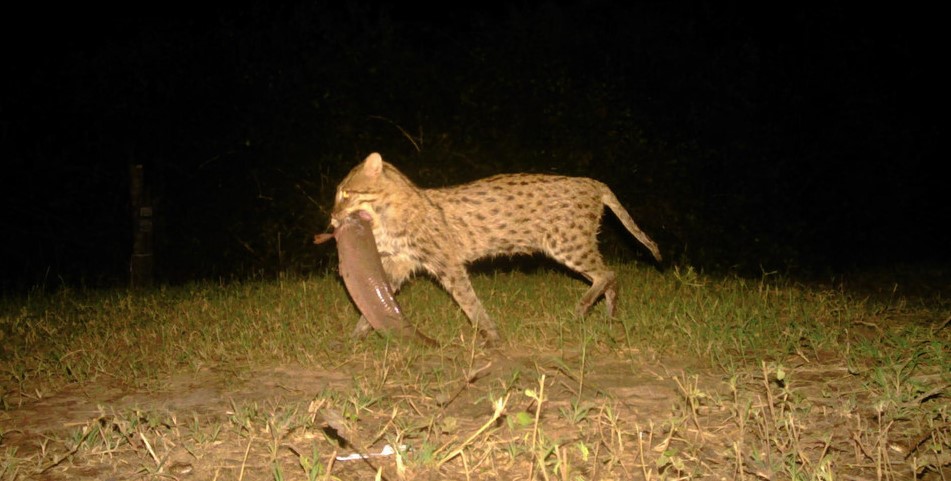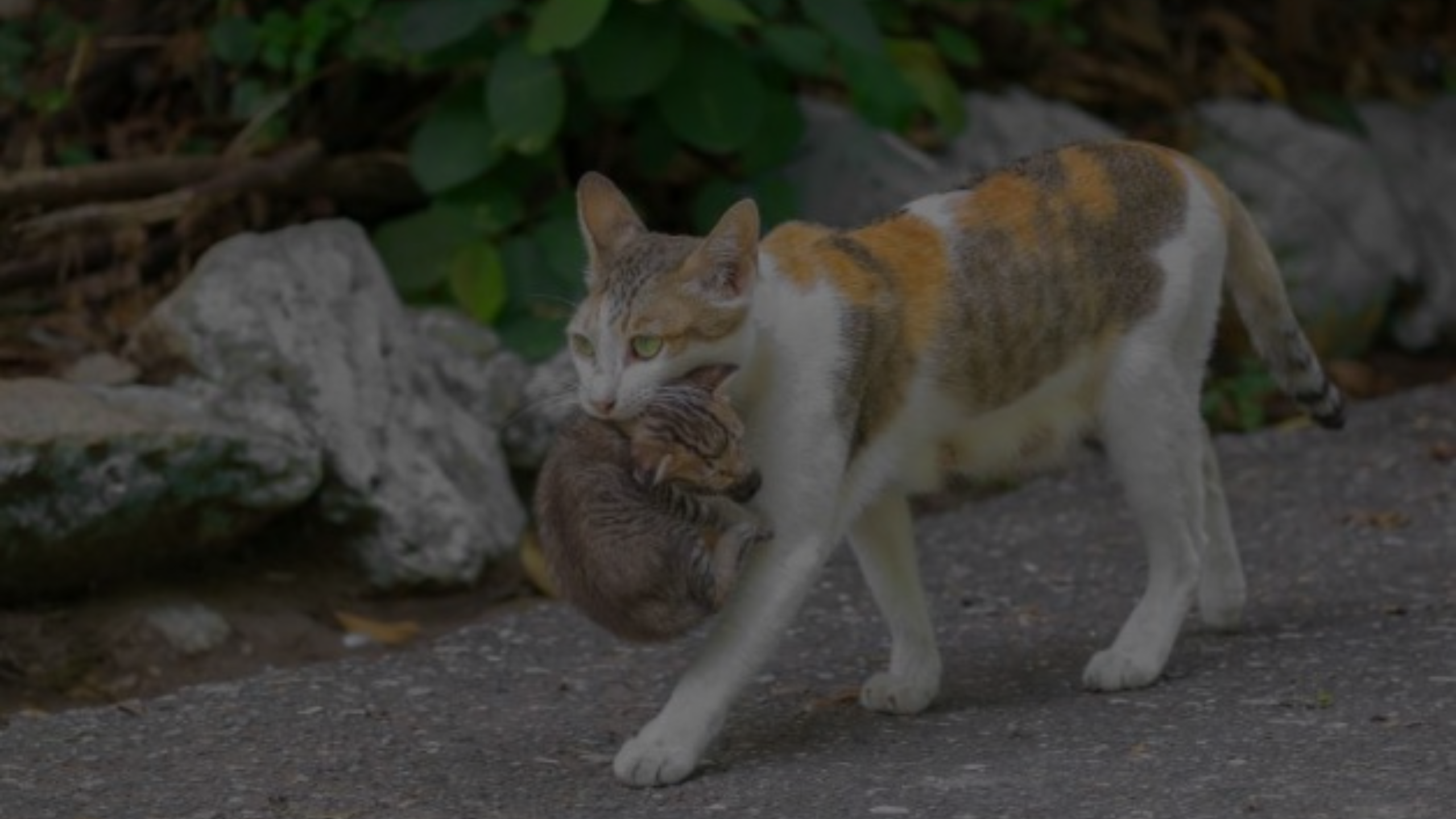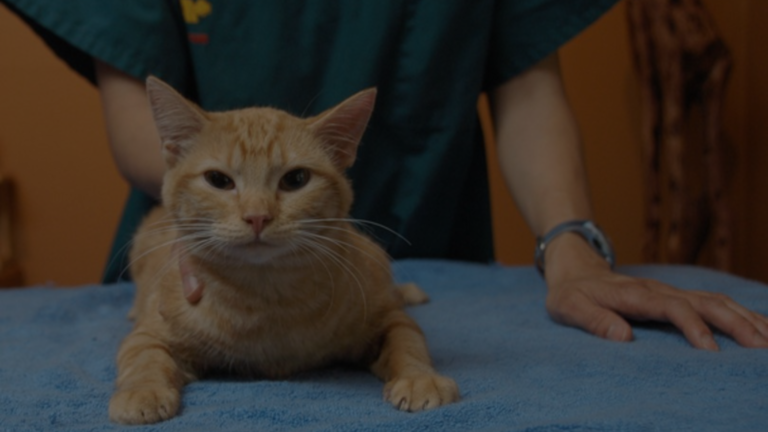Wild cats, often misunderstood and underestimated, have a remarkable ability to adapt to their environment. One of the most interesting aspects of feral cat behavior is how they handle their kittens. In this comprehensive guide, we’ll explore the world of feral cats and answer a burning question: “how often do feral cats move their kittens?” We’ll examine their survival tactics, maternal instincts, and the challenges they face in the wild.

The Secret Lives of Feral Cats
Feral Cat Basics
Before we delve into their maternal behavior, let’s understand what feral cats are. Feral cats are domestic cats that have returned to a wild state. Unlike stray cats, feral cats do not socialize with humans and prefer to live independently.

The Hidden Kittens
Feral cats often give birth to their kittens in hidden and protected places. This behavior is a survival strategy to protect their young from predators. Birth sites, also known as “kitten dens,” can be in a variety of places, including abandoned buildings, thickets, or even under porches.
The Frequency of Relocation
Initial Relocation
Feral cat mothers pass their kittens during the first few weeks of life. This initial action is usually a response to perceived threats. If they feel threatened or feel their den has been compromised, they will move their kittens to a safer place.

Limiting Human Interaction
Feral cats are incredibly cautious when it comes to human presence. They will often move their kittens if they believe humans are getting too close. This protective behavior ensures the safety of their children.
Regular Inspections
Feral cat mothers frequently check on their kittens and may move them periodically to prevent predators from discovering their hiding places. These regular inspections help keep their kittens safe.
Maternal Instincts at Play
Nursing and Nurturing
Feral cat mothers are dedicated to caring for their kittens. They nurse them, keep them warm, and clean them. Their maternal instincts are as strong as those of domesticated cats.

Teaching Survival Skills
As the kittens grow, the mother cat begins to teach them essential survival skills, such as hunting and grooming. These lessons are important for the kittens’ independence when they eventually leave the den.
Challenges in the Wild

Harsh Realities
Life is not easy for wild cats. They face several challenges, including finding enough food to feed their kittens and protecting them from larger predators such as raccoons and coyotes.
Human Intervention
Unfortunately, feral cats often come into conflict with humans due to concerns about their impact on local wildlife and the potential for disease transmission. This can disrupt the stability of their bases and lead to more frequent migrations.

Conclusion
In conclusion, feral cats exhibit a fascinating range of behaviors when it comes to relocating their kittens. Their maternal instincts drive them to ensure the safety and survival of their young, leading to occasional moves of the kitten den. Understanding these behaviors sheds light on the remarkable adaptability of feral cats in the wild.
Remember, feral cats play a crucial role in maintaining the balance of local ecosystems, and efforts to manage their populations should be approached with care and compassion.
Resources & References
For further insights into feral cat behavior and management, consider exploring these reputable resources:
Recommended Articles
Recommended Video
To supplement your knowledge, watch the YouTube video titled “How to Care for a Mama Cat & Kittens (3 Top Tips!).” This video provides valuable information on caring for mother cats and their kittens, enhancing your understanding of feral cat behavior.
FAQs – How Often Do Feral Cats Move Their Kittens
Why do feral cats move their kittens?
To protect them from predators, find food, or find a safer place.
How often do feral cats move their kittens?
Feral cats may move their kittens every few days or even more often.
What are the signs that a feral cat is about to move her kittens?
The mother cat may be carrying her kittens around in her mouth, or she may be staying away from her nest more often.
What should I do if I find a feral cat nest?
If the nest is in a safe place, leave it alone and monitor it from a distance. If the nest is in an unsafe place, you can move it to a safer area nearby.
What should I do if I find a feral kitten alone?
If the kitten is very young, it may need to be bottle-fed. If the kitten is old enough to eat solid food, you can try to feed it wet kitten food.
When can I socialize with feral kittens?
Feral kittens can be socialized between 4 and 12 weeks old. It is important to handle them gently and regularly during this time.



![Why Does My Cat Stare at Me? [Spiritual Meaning]](https://petsybox.com/wp-content/uploads/2023/10/Why-Does-My-Cat-Stare-at-Me-Featured-Images01-768x432.webp)



